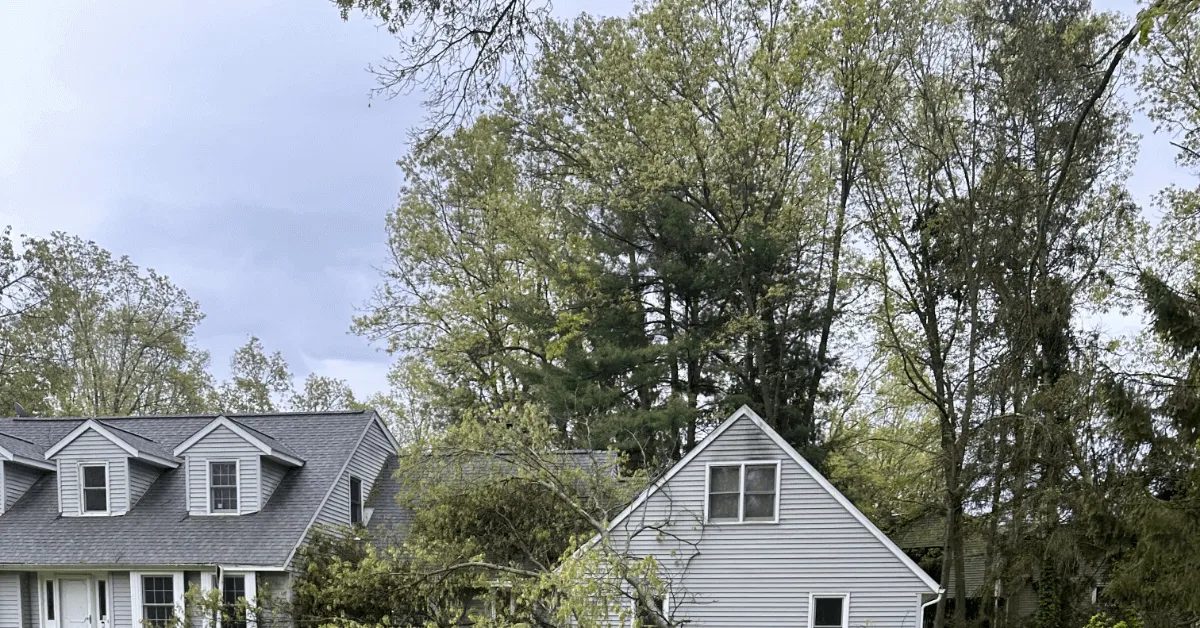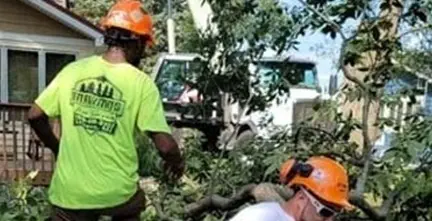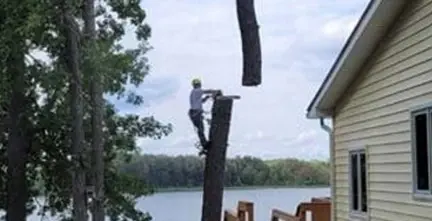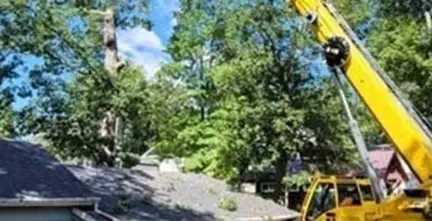Why Your Trees Deserve a Bit More Attention
Trees do a lot – they block wind, cool your home, boost curb appeal, and outlive most of your landscaping. But in Kalamazoo, where each season brings something different, even strong trees need a little backup.
Cold snaps, ice buildup, soaking spring rains, dry summers – it’s a lot. Ignoring tree care might not cause an issue today, but it often leads to headaches down the line.
Here’s what many Kalamazoo homeowners wonder:
- “Is this tree healthy – or slowly failing?”
- “How often should I water trees around here?”
- “What’s the right time to trim or cut back branches?”
- “Am I helping or hurting by adding mulch?”
This guide walks you through all of it, using everyday language and real-world logic.
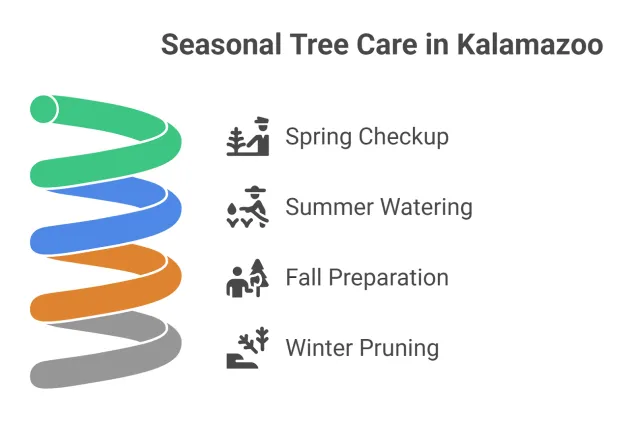
What Trees in This Region Really Deal With
Trees in Kalamazoo live through cold, snowy winters and warm, humid summers. That climate puts them in a tricky spot – they’re tough, but they still need care tailored to these swings. That means trees deal with:
- Bitter winters
- Heavy snow and ice
- Spring thaws and soggy ground
- Short, hot summers
You’ll often see:
- Sugar maples
- Eastern redbuds
- White pines
- River birch
- Red oaks
All of these can thrive – if you:
- Water deep, not often
- Prune at the right time
- Keep mulch managed
- Watch for pests and stress signs
How to Water Trees the Right Way
Watering trees isn’t about daily habits – it’s about giving them what they need when it counts.
Do this:
- Let the water soak in slowly, either with a hose set on low or a bucket with tiny holes near the bottom
- Focus on watering near the edges of the tree’s canopy – that’s where most of the thirsty roots live
- Mornings are best for watering because less sunlight means the soil holds moisture longer
| Tree Age | Amount | How Often (Dry Weather) |
|---|---|---|
| Young (0–2 years) | 10–15 gallons | Once or twice per week |
| Mature (3+ years) | Deep soak | Every 2–3 weeks |
Quick Check: Push a screwdriver into the soil. If it goes in easily 6 inches, skip watering. If not, it’s time to water.
How to Prune Without Causing Harm
Best time to prune:
- Late winter (before March). Trees are asleep, and healing starts fast.
Focus on:
- Dead, damaged, or rubbing branches
- Limbs growing toward your house or power lines
Avoid:
- Summer pruning (unless it’s urgent)
- Topping trees (cuts off their strength and structure)
- Cutting too close to the trunk – leave a small collar so it heals
Use clean, sharp tools. Wipe with alcohol between trees if you’re trimming more than one.
Warning Signs Your Tree Might Be in Trouble
Sometimes a tree looks fine – until it doesn’t. Here’s what to watch for:
| Sign | Possible Cause |
|---|---|
| Leaves dropping early | Root stress or bad drainage |
| Mushrooms at base | Internal decay |
| Peeling or cracked bark | Weather damage or insects |
| Piles of sawdust | Borer insects |
| Leaning or shifting base | Root problems |
More than one of these? It’s probably time to get it checked. If you’re wondering whether a tree really needs to come down, learn the signs to look for.
What to Do for Your Trees, Season by Season
Spring
- Check for broken limbs
- Clean up old mulch and lay down fresh
- Use fertilizer only if soil test shows a need
Summer
- Water deeply during dry weeks
- Keep an eye out for small invaders like aphids, borers, and spider mites – they’re more active during warmer months
Fall
- Rake leaves away to prevent fungus
- Wrap young trees before frost sets in
Winter
- Prune dormant trees
- Knock off heavy snow gently from limbs
- Don’t pile ice-melting salt near trunks
Easy Fixes to Avoid Common Mistakes
- Mistake: Mulch piled around the trunk like a volcano
Fix: Make a donut – 2–3 inches deep, but leave 6 inches clear around the bark - Mistake: Too much water
Fix: Only water when the soil is dry a few inches down - Mistake: Cutting in the wrong season
Fix: Late winter is best. Fall is worst. - Mistake: Ignoring bugs or fungus
Fix: Check your trees every few weeks, especially in summer - Mistake: Planting too close to a house
Fix: Give large trees plenty of space – at least 15 feet from the foundation
Most People Misuse Mulch – Here’s How to Get It Right
A good layer of mulch acts like insulation – it keeps roots from drying out in summer and freezing in winter while also holding in moisture. But too much does damage.
Smart mulch use:
- Stick to bark or wood chips
- Keep it under 3 inches deep
- Pull it back from the trunk
Heavy mulch holds in moisture – and that’s how rot and bugs show up.
When You Can Handle Tree Care (And When You Shouldn’t)
Good DIY jobs:
- Watering
- Adding mulch
- Trimming small branches
Better left to pros:
- Large branch removal
- Anything near power lines
- Treating deep disease or infestations
If it feels risky or confusing – pause and get expert help. One bad cut can cost more than calling a pro upfront.
Want to Start Small? Do This First
One task per season makes a real difference:
- Spring: Inspect limbs and mulch
- Summer: Deep watering every 2–3 weeks
- Fall: Wrap young trees before cold hits
- Winter: Prune and check bark for cracks
Healthy trees don’t need constant care – just the right steps at the right times.
FAQs: Tree Questions Homeowners Ask Most
What’s the safest mulch to use?
Use natural wood chips or shredded bark. Avoid dyed mulch and rubber – they can trap heat and don’t break down into the soil.
How do I know if my tree is stressed?
If your tree starts shedding leaves early or develops bare spots, it’s likely under stress – pay attention to color changes and patchy growth. Cracks or mushrooms at the base are also signs something’s wrong.
Can I trim trees in summer?
If a branch is dangerous, yes. But full trimming should wait for late winter. Summer cuts can weaken the tree.
Should I fertilize?
Only if a soil test says it’s needed. Overdoing it can cause fast growth that leads to weak limbs.
Do tree roots really crack foundations?
Some types do. That’s why spacing and species choice matters. Don’t plant big trees too close to buildings.
When should I call a professional?
Any time you see leaning, splitting, hollow sounds, or pest damage. Don’t wait – it only gets worse.
Closing Insight: Nurturing Trees the Right Way
Tree care isn’t about doing everything – it’s about doing the right things at the right time.You don’t need to be an arborist. It’s about observing what your trees are telling you and stepping in with the right support when it counts.
Once you get into a seasonal rhythm, looking after your trees becomes a natural part of yard care – and the payoff lasts for decades.
Wondering if your tree needs extra attention?
Brawner’s Tree Service is always ready to help. No pressure. Just honest advice when you want it.
